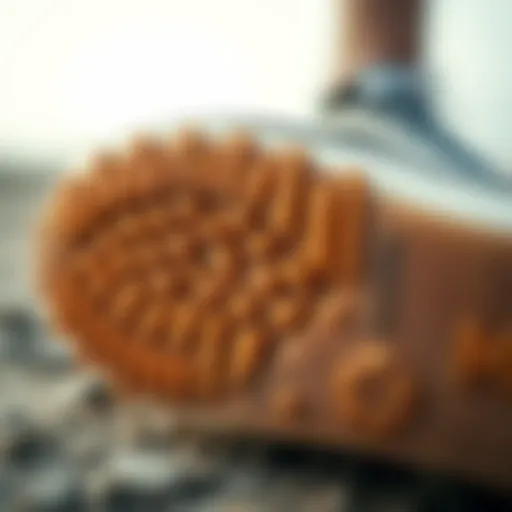Discover Local Surfing Spots and Culture
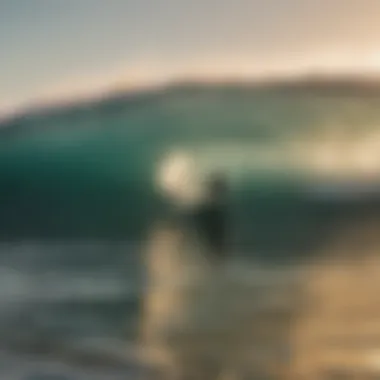

Intro
Surfing isn’t just a sport; it’s a lifestyle that intertwines with the rhythm of the ocean and the culture of the locale. This article takes you on an enlightening journey through nearby surfing spots, where unique wave types, local surf traditions, and practical tips come together. Whether you’re a novice looking to catch your first wave or a seasoned pro chasing that perfect curl, the insights gathered here are meant to inspire and elevate your surfing experience.
Surf Gear and Equipment
When it comes to getting out on the waves, having the right gear can make all the difference. Not only does it enhance your performance, but it also ensures safety while you’re riding the waves. Let's break down the essentials that every surfer should consider.
Latest Surfboard Technologies
Surfboards come in all shapes and sizes, each catering to a specific type of wave and skill level. Recent advancements have propelled the design of boards to new heights. For instance, modern materials like epoxy and carbon fiber significantly boost durability and responsiveness. Shapes like the fish, longboard, and shortboard serve different purposes, making it crucial to choose the right one based on local conditions.
- Epoxy Boards: Lightweight and durable, ideal for beginners and smaller waves.
- Shortboards: Responsive and nimble for more experienced surfers.
- Longboards: Perfect for a laid-back session, providing stability and ease of paddling.
"The right surfboard can be a game-changer; it's akin to having a trusty steed for the adventurous knight."
Essential Accessories for Surfers
Besides your surfboard, several accessories can enhance your surfing experience:
- Surf Wax: Crucial for traction on your board. Different types vary based on water temperature, so check local conditions.
- Leash: A safety must that keeps your board close to you. Never hit the waves without one!
- Wetsuit: Depending on the water temperature, a wetsuit can keep you warm and comfy while surfing.
- Sunscreen: Protect your skin from those vigorous rays while you’re out in the open sea.
Techniques and Skills
Mastering surfing demands practice and a grasp of some fundamental techniques. Improving your skills not only increases your wave count but also enriches your experience.
Wave Riding Strategies
Understanding how to read waves is a vital skill. The ocean is your playground, and each wave tells a story:
- Paddling Techniques: Timing your strokes with the wave’s rhythm can help you catch more waves.
- Positioning: Be strategic about where you sit on the board while waiting for waves. The sweet spot is usually just behind the peak.
Safety and Surf Etiquette
Surf safety cannot be overstated. Always be mindful of others while consistency is key.
- Know the Local Rules: Each spot has its own set of unwritten rules. Pay attention to locals and respect their practices.
- Keep a Safe Distance: Give space to fellow surfers; it’s a shared ocean after all.
- Don’t Drop In: Avoid taking someone's wave, as it can lead to conflicts or even accidents.
Surfing offers a sensational opportunity to connect with nature and immerse in local cultures. Understanding local spots and the quirks of their waves can create an enriching experience, creating a bond between the surfer and the ocean. By embracing the gear, honing techniques, and respecting community norms, anyone can find joy in the exhilarating world of surfing.
Understanding Local Surfing Culture
Diving into the world of surfing is like stepping into a vibrant tapestry woven with local customs, traditions, and ideologies. Understanding local surfing culture is essential for anyone looking to connect with their surroundings while riding the waves. This understanding fosters respect for the ocean, the environment, and the community of surfers who share this passion. It connects you with the spirit of a place, allowing you to appreciate not just the surf, but the stories and experiences that ebb and flow with the tide.
Defining Surfing Regions
Surfing spots often vary greatly from one region to another, shaped by geographical features, climate, and local cultures. Each surfing region can be distinct in its characteristics. For example, the rugged coastlines of California may beckon with powerful, crashing waves that attract skilled surfers, while the gentler, warmer waters of Florida offer more inviting conditions for novices.
As you explore surfing spots, consider these elements:
- Wave Patterns: Some regions have consistent swells, while others may be hit or miss based on the season.
- Crowd Dynamics: Places like the beaches of Hawaii often boast a higher number of surfers, which can affect the quality of your session.
- Accessibility: Not all surfing regions are easy to get to. Some hidden gems may require a bit of a trek.
Ultimately, identifying these regions and what they bring to the surfing experience adds depth to your journey.
The Influence of Local Communities
The local surfing community has a significant influence on the culture and atmosphere of any beach. These communities often serve as guardians of the surf spots, sharing knowledge that goes beyond technique or wave predictions. Engaging with locals can provide valuable insights into the best times to surf, how to navigate the waters safely, and what spots might be off the beaten path.
Local surfers embody the spirit of their area. Their passion connects people and fosters a sense of belonging. They often organize beach clean-ups, surf competitions, and events that promote appreciation for the ocean and environmental stewardship.
Consider the following when interacting with local surf communities:
- Respect Traditions: Many surf spots have unwritten rules, governed by the surfers who frequent them. Understanding these can enhance your experience.
- Share Stories: Engaging with long-time locals can lead to shared experiences that deepen your relationship with the waves.
- Participate in Community Events: Investing time in local known events strengthens community ties, making your surfing experience all the more fulfilling.
Surfing is more than just a sport; it’s part of who we are. Understanding the culture that surrounds it can turn a simple surf session into a lasting memory.
Identifying Suitable Surfing Spots
Finding the right surfing spots is essential for making the most of your time on the water. With varying wave types and geographical features, not every location will suit every surfer. Whether you’re a novice still trying to find your balance or a seasoned pro looking for the next big wave, effectively identifying suitable surfing spots is key. The right location can enhance one’s skills, and understanding how each spot uniquely presents its challenges and rewards can transform your experience. In essence, it’s about tuning in to the subtleties of the environment.
Factors to Consider for Surf Spot Selection
When deliberating over where to surf, a few critical factors can make or break a session. Having a firm grasp of these elements can lead you to spots that are tailored to your level and goals.
Wave Conditions
Understanding wave conditions is paramount. Different spots have varying wave characteristics influenced by factors like the ocean floor, swell direction, and prevailing winds. In general, surfers should look for spots known for their clean, consistent waves. The ideal wave condition often combines the right size with a manageable frequency. For instance, a beach where waves break over a sandy bottom can be more forgiving for beginners, while a reef break might be better suited to the more experienced. However, one must also be wary of intense waves that can catch you off guard.
- Unique Feature: Some locations offer waves that can change drastically throughout the day or with shifting tides. This variability means that a morning surf might feel quite different from an afternoon one.
- Advantages/Disadvantages: While the unique challenges can be a boon for progress, it might frustrate those unprepared for sudden changes in conditions.
Tide Considerations
Tides matter just as much as the waves you ride. The ebb and flow can impact the shape and size of the waves, depending on whether it's low or high tide. Many surfers swear by specific tides, often favoring mid to high tide at certain spots for the best waves. The right tide can make a mediocre location suddenly come alive with surfable conditions, creating a standout surfing experience.
- Unique Feature: Certain beaches reveal different breaks with varying tides, meaning a spot might be perfect at one tide and less ideal just a few hours later.
- Advantages/Disadvantages: The variability can offer challenges; if you're not aware of the tide schedules, you might find yourself at a location where the waves are lackluster.
Wind Patterns
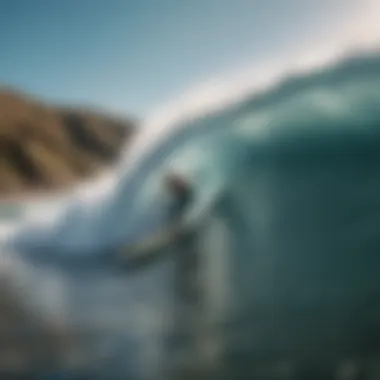

Wind can change the complexion of the waves on any given day. Conditions can range from blustery and chaotic to soft and smooth. The key is learning about how local winds behave. An area often characterized by offshore winds is generally regarded as a better hunting ground since they create clean, manageable waves. Understanding wind patterns can give surfers a substantial edge in selecting the right conditions.
- Unique Feature: The direction of the wind, whether it's onshore or offshore, will determine not just the quality of the waves but also their consistency.
- Advantages/Disadvantages: An offshore wind usually signifies excellent surf conditions, though it can sometimes become too windy, making it tricky for surfers to maintain control.
Researching Local Surfing Locations
Once you've figured out the conditions that suit your style, the next step is to research available surfing locations in your area. Aside from relying on experiences, sharing could enhance your choices significantly.
Online Resources
These days, finding good places to surf can often start with a quick web search. There’s a knack to knowing which sources to trust. Websites dedicated to surf reports can provide invaluable real-time data about local beaches, including wave heights, tide movements, and wind conditions. The key characteristic of these resources is their accessibility and up-to-date information.
- Unique Feature: Many sites also feature user-generated content, such as photography and personal reviews, which can offer insights that statistics alone cannot provide.
- Advantages/Disadvantages: While the broad reach of the internet is helpful, sometimes it leads to information overload. It helps to vet your sources carefully to avoid misguided trips.
Surfing Communities
Narrowing down to specific surf spots can also be achieved through local surfing communities. These groups often serve as a wealth of knowledge, sharing tips and firsthand accounts of particular locations. The communal aspect of surfing means that you're less likely to miss out on hidden gems when actively engaging with other surfers.
- Unique Feature: Being part of a local community often translates into accessing lesser-known spots that don’t make it onto mainstream surfing sites, giving you a taste of something unique.
- Advantages/Disadvantages: While you gain insights from experienced surfers, local jargon or unspoken norms about etiquette can sometimes become overwhelming to newcomers.
Local Surf Shops
Visiting local surf shops can open numerous doors. Often seen as hubs of surf culture, these shops provide equipment rentals, gear sales, and advice on where the best surf spots might be found at any given time. Staff often consist of passionate surfers who know their local waters inside and out. The unique feature of surf shops is their personalized service; employees can guide you based on your skill level and preferences.
- Advantages/Disadvantages: While you gain direct access to professional opinions and local knowledge, be aware of the geographical bias; the places they suggest may not always align with what you're looking for.
Featured Nearby Surfing Destinations
When it comes to discovering the best surfing locations, knowing where to look is half the battle. Featured nearby surfing destinations stand out as vital components of this journey. Whether you're chasing adrenalin-pumping waves or a serene beach experience, these spots typically offer a mix of both well-known and lesser-known options that cater to all types of surfers. Exploring these destinations not only helps surfers find waves that match their skill level but also fosters a sense of community among surfers of various expertise. So, let's dive into some of the treasures waiting for you at your local coastline.
Hidden Gems in Coastal Areas
Underrated Beaches
Underrated beaches often hide in plain sight, surrounded by popular tourist traps and bustling hotspots. These beaches, while less frequented, can offer a unique surf experience that combines tranquility with fantastic conditions. One key characteristic of these spots is their often pristine nature. Many of these hidden gems remain untouched by heavy commercialization, allowing surfers to enjoy not just the surf, but also the beauty of the surroundings.
Take, for instance, a smaller shore like Moonlight Beach in Encinitas, California. Often overshadowed by its more famous cousins like Huntington or Malibu, this beach delivers decent waves and a friendly vibe with fewer crowds. The advantages of mentioning these underrated spots are significant; they often provide access to unspoiled waves and a more relaxed atmosphere, making it easier for beginners to catch their first waves without pressure.
Local Recommendations
When you're looking for surfing inspiration, local recommendations are invaluable. These suggestions come from people who know the area intimately and have experienced the waves firsthand. A key aspect of local recommendations is that they frequently highlight unique spots that you might not find on major surfing blogs or guides.
Where can you find these insights? Local surf shops are often treasure troves of information. For instance, a small surf shop in a quiet beach town might point you toward hidden coves that harbor exceptional surf when conditions are just right. Community boards in these shops often display tips shared by surfers who frequent the area, providing you with valuable intel. The beauty of local recommendations lies in their depth—understanding the nuances of surf patterns and effects of tides. While highly beneficial, do keep in mind some recommendations might be influenced by personal preference, so a bit of exploration wouldn’t go amiss.
Popular Surf Spots with High Traffic
Iconic Surf Beaches
Iconic surf beaches are often synonymous with what surfing culture represents—the thrill, the style, and the community. Places like Waikiki in Hawaii or Bondi Beach in Australia draw surfers from all walks of life. They have solidified their status due to consistent waves and a rich history of surfing. A strong characteristic of these beaches is their vibrant social scene. You’ll often find surfers engaging with one another, sharing techniques, and sometimes even forming long-lasting friendships.
However, the real draw for these spots goes beyond just surfing; it’s about the overall experience. On any given day, the excitement of competitions, events, and casual meetups blend together, creating a lively environment that makes the surf feel even more energizing. The downside? Higher foot traffic can lead to crowded waves, which could be daunting for beginners and less seasoned surfers.
Surf Competitions
Surf competitions represent the pinnacle of the surfing experience for many enthusiasts. These events aren't just about showcasing skills; they are platforms for passion and pride amongst surfers. Competitions like the World Surf League Indianapolis Open bring together top talent, drawing in large crowds eager to witness skilled surfers tackle those powerful waves.
The unique feature of competitions is the level of excitement they generate, both for the surfers participating and the spectators. Each contestant raises the level of competition, pushing the boundaries of what one might perceive as possible on a surfboard. However, these high-traffic events can lead to temporary changes in beach accessibility and surf conditions, which might not suit everyone’s taste.
"In most surf competitions, the sense of community transcends the rivalry; it’s a celebration of the sport itself."
Experiencing both underrated beaches and iconic surf spots allows us to appreciate the vast array of surfing opportunities available, whether seeking peace in solitude or the thrill of competition among passionate surfers. By blending these insights into one’s surfing journey, the realization dawns that every surf spot holds its unique charm and stories worth exploring.
Safety and Environmental Considerations
Surfing, while exhilarating, carries a couple of responsibilities. It's not just about catching the perfect wave but also ensuring that surfers, as well as the environment, remain safe and respected. Recognizing potential dangers and adopting sustainable practices is vital for all who choose to hit the water.
Understanding Surfing Safety Protocols
Riptide Awareness
Riptides pose a significant risk to surfers at many beaches. These strong currents can pull unsuspecting surfers away from shore, leading to dire situations. Understanding the mechanics of riptides is essential. Riptides typically form in locations where water is rushing back to the ocean through breaks in sandbars or where water is funneling through narrow inlets. Recognizing these areas not only helps in keeping surfers safe but also adds to a surfer's knowledge of their local surf conditions.
The key characteristic of riptides is that they can develop quickly and aren’t always easy to spot. By being informed, surfers can enjoy their session without unnecessary worries. It’s beneficial to adopt a proactive approach, such as learning to swim parallel to the shore in the event of being caught in one. This method is less commonly discussed in surf circles but can save lives. The unique feature surrounding riptides is their unpredictability; they can occur even in seemingly calm waters. Therefore, the more awareness surfs enthusiasts have about them, the better equipped they will be to navigate challenges.
Equipment Checklists
Before heading out for a surf session, having an equipment checklist is paramount. This is an often overlooked aspect that can greatly influence the overall experience. Surfers should ensure they have vital items like the correct surfboard, wetsuit, and safety gear. The key benefit here is the peace of mind that comes from knowing you are fully prepared. This simple checklist not only helps in preventing frustration on the beach but also enhances safety, as being fully prepared can reduce risks associated with equipment failure.
A unique feature of having a checklist is that it encourages surfers to regularly assess their gear's condition. A broken leash or even a hidden crack in a surfboard could lead to an unfortunate encounter with the ocean. The advantages are clear: better preparedness contributes to an enjoyable surfing experience while minimizing safety hazards.
Promoting Eco-Friendly Practices
As surfers, there’s a strong call to respect the oceans we so adore. Engaging in eco-friendly practices ensures that these beautiful surf spots remain intact for future generations.
Reducing Plastic Waste
Plastic waste in oceans affects marine life and surfing alike. Reducing plastic waste is vital for preserving the natural environment and keeping surf spots clean. By adopting habits like using reusable water bottles and bags made of eco-friendly materials, surfers significantly lessen their environmental footprint. The key takeaway here is that even small changes, like choosing alternatives to single-use plastics, can lead to a notable difference in the health of local beaches.
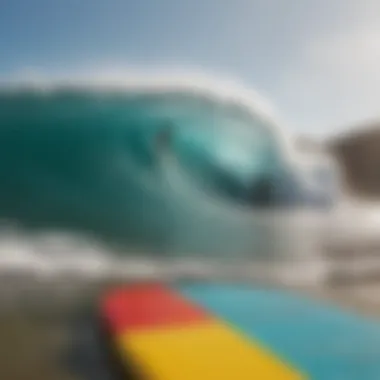

This topic resonates with surfers because many are motivated by a love for the sea and desire to maintain its beauty. The unique benefit of reducing plastic waste lies in its simplicity; everyday choices contribute massively to ocean conservation efforts. Being vigilant about plastic consumption not only maintains beautiful surf spots but also can enhance the quality of surfing conditions over time.
Protecting Marine Life
Protecting marine life is essential for sustainable surfing. Healthy oceans teem with life, which provides not only stunning scenery but a safe environment for surfers. This aspect is particularly important, as many surfers are unaware of how their actions can directly affect the aquatic ecosystem. The key characteristic of protecting marine life involves safeguarding not only the fish and plants but also the overall health of the water.
Educating oneself about local wildlife can prevent harm. For instance, avoiding nesting areas or being mindful about how pollution affects marine habitats can help preserve these ecosystems. The unique feature of this responsibility lies in understanding that it goes hand-in-hand with enjoying the sport. Surfers of all levels can create a positive impact by being conscious of their surroundings, ensuring that the ocean remains vibrant and welcoming for everyone who shares a passion for riding the waves.
"Being a surfer is about respecting the environment that gives you so much joy."
Surfing is not merely a sport; it's a way of life that intertwines with nature. By making safety a priority and adopting eco-friendly practices, surfers contribute to a sustainable culture that honors the ocean they love.
Preparation for a Surfing Session
Getting ready for a surfing session isn’t just about grabbing your board and hitting the waves. There's a process that can make or break your experience. Proper preparation involves knowing what gear you need, having a routine to follow, and ensuring you’ve checked the surf conditions beforehand. A solid prep routine improves not just your performance but also your safety while you’re out there riding the waves. Taking time to prepare sets the stage for a fun and rewarding surf session.
Essential Gear for Surfers
Equipping yourself with the right gear is crucial. The pieces you choose can determine your comfort and success in the water.
Choosing the Right Surfboard
When it comes to choosing the right surfboard, it’s all about finding a balance between control and maneuverability. A shorter board offers greater flexibility for tricks, but it can be a challenge to balance on for beginners. Conversely, longer boards, like longboards, provide stability and are great for beginners learning the ropes. This helps them catch smaller waves more easily.
A key characteristic to look for in a surfboard is its volume, which affects buoyancy and paddling efficiency. A higher volume board might be a beneficial option for those who are still finding their sea legs. It allows for easier paddling and helps with wave-catching.
However, there’s a tradeoff. Too much volume can make the board sluggish in turning and navigating waves. Identify your skill level and specific needs when selecting a board; this is critical in enhancing your overall surfing experience.
Wetsuit Considerations
The wetsuit is another vital piece of gear, especially if you’re surfing in cooler waters. A wetsuit keeps your body warm and functional in harsher temperatures, letting you stay out longer without the chill getting to you. It hugs your body closely, preventing water from seeping in too much while allowing for full range of movement.
One key aspect is the thickness of the wetsuit. A thicker wetsuit offers better insulation but might sacrifice flexibility. On the flip side, a thinner wetsuit provides comfort and freedom of movement but may leave you feeling cold after prolonged exposure to chilly waters.
You're gonna want to consider local water temps too. In warmer areas, a thinner wetsuit or even a spring suit may keep you comfortable. Overall, the right wetsuit enhances both comfort and performance, helping you focus on riding those waves instead of fighting off the cold.
Pre-Surf Routine
Establishing a pre-surf routine is something every surfer should embrace. It sets up not just physical preparedness but also the right mindset.
Warming Up
A good warm-up is essential to put your body in fighting shape for surfing. Stretching and light exercises help activate your muscles and joints, reducing the risk of injury. Think of it this way: a good warm-up is like oiling a machine; it makes everything run smoother.
Consider doing dynamic stretches that mimic movements you’ll perform while paddling and riding. Focus on your arms, shoulders, and core, as these areas take the brunt when surfing.
The key characteristic here is to avoid overdoing it. Too much stretching or high-energy movements could tire you out before you even hit the waves. It’s about finding a balance that gets your blood pumping without zapping your energy.
Checking Conditions
Before jumping into the water, checking surf conditions is an absolute must. Be aware of wave sizes, currents, and wind directions, as these factors greatly influence your session. Knowing what to expect helps you choose the right board, allows you to connect with other surfers about where to go, and also prepares you mentally.
A popular tool among surfers are surfing apps that provide forecasts and tide charts. These apps can give insights into the best times to surf, and understanding wind patterns can lead you to the best waves of the day.
One unique feature about checking conditions is that weather can change rapidly, so stay flexible in your expectations.
In summary, being prepared fundamentally impacts your entire surfing experience. From choosing the right gear to following a pre-surf routine, each step ensures you get the most out of your time in the water. You’ll not only enjoy surfing more but also enhance your skills and safety overall.
Techniques for Surfing Effectively
When it comes to surfing, the stakes are no joke. Mastering techniques is the key to not only riding the waves but doing so safely and with style. The surfing art is an intricate dance with nature, and understanding essential techniques can elevate the experience from mere recreation to a fulfilling passion. As surfers dive into the intricacies of their craft, they’ll realize that effective techniques pave the way for skill enhancement, enjoyment, and confidence.
Fundamental Surfing Techniques
Paddling
Paddling is arguably one of the most crucial skills a surfer must develop. Picture it: you're sitting on your board, waiting for that perfect wave to roll in. Paddling determines how quickly you can catch that wave. It requires a rhythm that makes it efficient yet powerful, allowing surfers to position themselves effectively.
The key characteristic of paddling lies in the technique; it’s not just about moving arms. Using your core to generate power can conserve energy for when it counts most. This method keeps you from tiring out before you've even caught a wave.
- Advantages of effective paddling include:
- Enhanced wave-catching ability.
- Greater stamina for longer sessions.
On the downside, many beginners struggle with paddling efficiently, often leading to frustration and fatigue. But with practice, this skill can transform into a surfer's best ally.
Pop-Up Method
The pop-up method is another essential maneuver in the surfer's toolkit. It is the swift and fluid action of transitioning from a prone position on the board to standing upright, ready to ride. This part is like flipping a switch when a wave comes, aiding surfers in regaining their balance and taking control of their ride.
The uniqueness of the pop-up lies in its timing; getting it right means the difference between securing your ride and tumbling into the surf. This technique emphasizes body positioning and timing; a smooth pop-up coordinates with the energy of the wave itself.
- Key benefits often noted include:
- Increased wave stability.
- Higher confidence levels upon standing.
However, the pop-up can be an intimidating hurdle for newcomers. Missteps can lead to wipeouts, but with repetition, it can become second nature, enhancing overall performance.
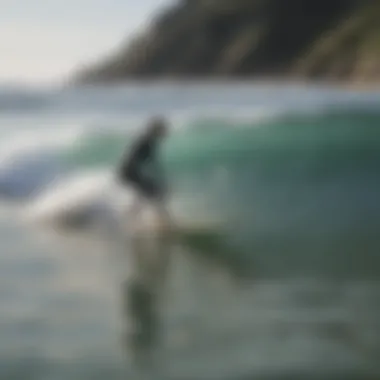

Advanced Riding Skills
Turning and Maneuvering
When you've got the basics down, the next level involves turning and maneuvering. This skill is what separates the novices from the seasoned surfers, allowing for tricks and control during a ride. The ability to steer your board effectively translates into responsiveness to changing wave conditions, making it easier to adapt mid-ride.
The essential aspect of turning and maneuvering is control; a good turn can enhance the ride and help avoid obstacles. Surfers who master this skill find themselves dancing with the wave instead of simply riding it, which opens doors to more advanced techniques.
- Benefits include:
- Improved balance and control on the wave.
- Ability to navigate various surf conditions.
However, improper turning can lead to loss of momentum or even falls. So surfers must practice diligently, as each wave presents different challenges.
Wave Selection
Lastly, wave selection is an art form in itself; it’s about choosing which wave to ride when you’re in position. Not every wave is created equal, and not all of them will yield a good ride. The unique feature of wave selection lies in understanding wave formations, swell patterns, and water depth. This knowledge can significantly enhance the experience, as selecting the right wave can lead to exhilarating rides.
The key characteristic here is intuition; with experience, surfers develop a knack for reading the ocean.
- Some advantages of proficient wave selection include:
- Greater chances of catching high-quality waves.
- Improvement in overall surfing skills and enjoyment.
The challenge lies in the unpredictability of the ocean. Waves differ in size, shape, and power, meaning that surfers must remain vigilant and observant to make the best choices.
Effective techniques in surfing combine skill, knowledge, and practice. Mastering them not only improves performance but also enriches the whole surfing experience.
The Role of Technology in Surfing
In today's fast-paced world, technology plays a significant role in nearly every aspect of our lives, and surfing is no exception. The integration of digital tools and gadgets enhances the surfing experience by providing surfers with valuable information and improving overall safety. It's not just about riding the waves anymore; it’s about understanding them.
With the rise of surfing apps and gadgets, surfers can access data that informs their decisions before hitting the water. This ensures they are prepared for varying conditions, making surfing not only more enjoyable but also safer. Here, we look into some key technological advancements that are transforming surfing.
Surf Forecasting Apps
Surf forecasting apps have become essential tools for surfers wanting to catch the most favorable waves. These apps curate data from various sources to give real-time updates on surf conditions. You have tools like Surfline and Magicseaweed that offer predictions on wave height, swell direction, and tide times. Such insights are invaluable; they allow surfers to select the best spots depending on what conditions will be present.
But user-friendly interfaces and comprehensive data are not the only selling points of these apps; many offer community features. Surfers can connect, share insights, and even upload photos of local conditions. This sense of community can turn a solitary endeavor into a more social experience. Overall, these apps are a practical and indispensable resource for both novice and seasoned surfers alike.
Wearable Tech for Surfers
With technology progressing at a breakneck speed, wearable devices are quickly becoming part of the surfer's toolkit. This technology can be divided into two prominent areas: performance tracking and safety monitoring.
Performance Tracking
Performance Tracking devices offer surfers the ability to gather vital data on their surfing sessions. These gadgets can monitor distance paddled, wave count, and even ride duration. They function like personal coaches that give insight into how well a surfer is performing. A key characteristic is the immediacy of feedback; you can glance at your watch or phone after a session to see how you did.
The benefit of using performance trackers is twofold. They not only keep surfers informed about their capabilities but also help in identifying strengths and weaknesses. For some, maintaining motivation is key, and tracking progress can boost morale significantly. As such devices become more sophisticated, they continue to evolve, incorporating features like GPS mapping to provide even richer data.
Safety Monitoring
Safety Monitoring technology takes a different, yet equally crucial angle at enhancing the surfing experience. Devices aimed at safety often include features that can alert someone if conditions become too dangerous. This technology can monitor heart rates and detect irregular patterns during strenuous activities; essentially keeping a check on the surfer’s health as they tackle the waves.
A noteworthy feature of safety monitoring devices is their emergency protocols. In case of an accident, some gadgets can send an alert to designated contacts or emergency services, potentially saving lives. Their significance cannot be overstated, especially for those venturing out alone or in remote areas. The balance between adventure and safety is delicate, and these devices help to tip it in favor of preservation.
"It’s not just about catching waves anymore; technology has made it possible for surfers to be safer and more informed, ultimately enhancing the experience."
In summary, technology significantly elevates the surfing experience in numerous ways. From predicting the best surf days to providing data for performance improvement or enhancing safety, the role of technological tools is indispensable. Surfers who embrace these advancements are not only contributing to a safer community but also unlocking new horizons on their surfing journey.
Post-Surf Reflections
Reflecting after a surfing session is not merely a routine; it’s a powerful tool for growth and understanding in this exhilarating sport. Engaging in post-surf reflections can help surfers, seasoned or novice, to distill experiences into valuable lessons. In a sport that pivots on precision and agility, taking a moment to evaluate what transpired can be illuminating. Not only does it cultivate a better grasp of individual performance, but it can also provoke a deeper appreciation for the environment and the delicate wave dynamics that dictate each ride.
Evaluating Your Session
Deciphering how your session unfolded can significantly impact your approach to future surfing endeavors. Gaining insight from each outing can turbocharge one’s progression in the sport.
Recording Progress
Keeping a surf journal or using an app to log your surfing sessions allows you to track patterns over time. The compelling aspect here is documentation. Riders can jot down the types of waves caught, increased confidence in skills, or even missteps. This practice not only acts as a reminder of triumphs but also paints a clearer picture of areas needing enhancement. However, it's vital to consider that while recording offers clarity, it can sometimes lead to overthinking. Surfers might fall into the trap of scrutinizing each detail rather than enjoying the ride itself.
"The best surfer out there is the one having the most fun." - Duke Kahanamoku
Identifying Areas for Improvement
Pinpointing facets that could be improved is essential in refining skills. Highlighting the learning curve is indispensable for long-term development. One primary characteristic of this process is self-reflection. After an exhilarating surf, taking stock of performance can reveal insightful patterns, like timing or technique failures.
Unique to this practice is the ability to set tangible goals for future sessions. It’s not just about catching more waves but mastering how to tackle bigger ones with finesse. However, being too critical can harbor a negative spiral, where joy is supplanted by frustration over unattainable perfection.
Community Interaction after Surfing
Building a solid bond with the local surf community after the waves is as enriching as the ride itself. It creates a nexus of shared experiences and camaraderie that can be invaluable.
Discussing Waves
Engaging in conversations about the waves you caught enhances camaraderie among surfers. It’s a unique way to dissect the nuances of each wave and share the thrill of near victories or discuss the mechanics that led to wipeouts. This back-and-forth fosters a sense of belonging and inclusivity which brings with it the benefits of shared wisdom.
A distinctive quality of these discussions is the camaraderie they build. However, it’s crucial to be mindful that pride can sometimes overshadow the objective learning process, causing competition to brew instead of fostering togetherness.
Sharing Experiences
Sharing tales of surf escapades can be a delightful aspect of post-surf interaction. It’s about creating a tapestry of stories that resonate with fellow surfers. This communal exchange serves to inspire and educate through the myriad experiences each surf outing can bring.
The essence of this practice lies in its ability to create connections with others who understand the waves' unique challenges. Yet, there’s a possibility that sharing can verge into boastfulness. A balance must be struck, where learning and humility reign supreme in stories shared.



